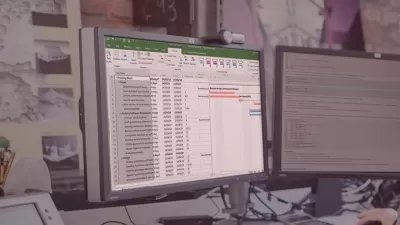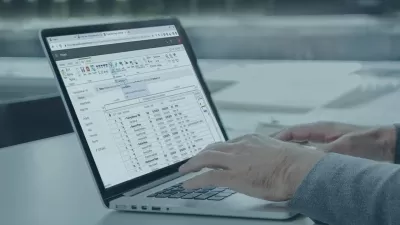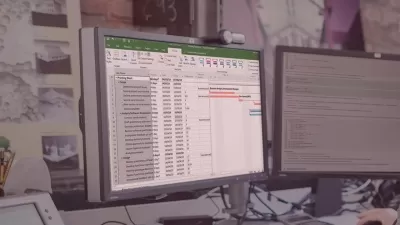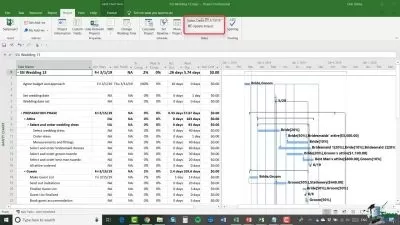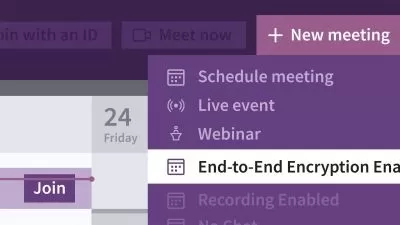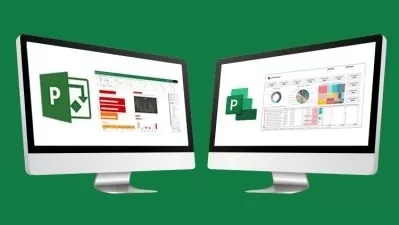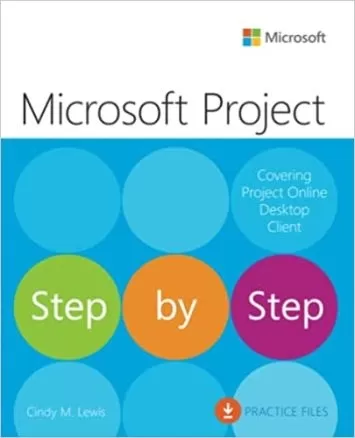About Microsoft ProjectLearn More
Microsoft Project is a popular project management software suite designed to help project managers analyze resources, predict development and production needs, and improve collaboration among design and production teams. Microsoft Project training on Udemy can introduce you to the powerful tools this software provides, and build your existing project management skills.
Sort by:
Sorting
The newest
Most visited
Course time
Subtitle
Filtering
Courses
Subtitle
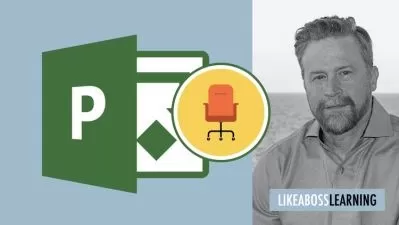
Udemy


Brian Culp
Microsoft Project 13/16/19 - Like a Boss (Exam 74-343 prep) 6:28:32
English subtitles
05/07/2024
Subtitle
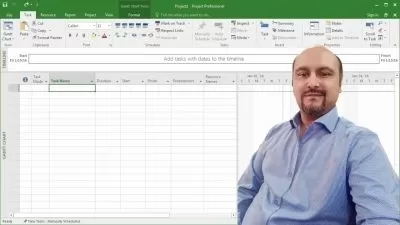
SkillShareMicrosoft Project Professional Beginner Class about Project Management
42:30
English subtitles
02/05/2024
Subtitle

Udemy


Sabri C. PMP | 120,000+ Enrollments Worldwide
Microsoft Project: MS Project 2019 2016 2013 Complete_8 PDUs 8:15:17
English subtitles
09/07/2023
Subtitle
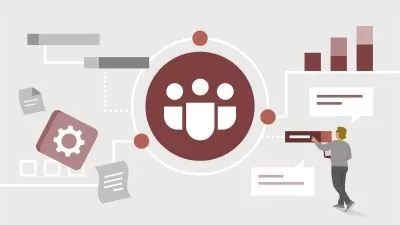
Linkedin Learning


John Riopel
Microsoft Teams Integration with Project for the web and Power BI 1:16:56
English subtitles
07/16/2023
Subtitle
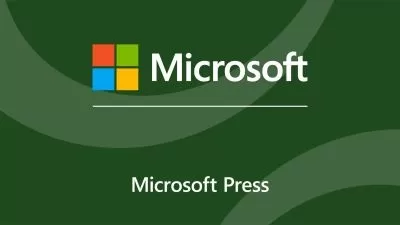
Linkedin Learning


Microsoft Press and Tim Warner
Microsoft Project Step by Step: Planning for Successful Project Management 4:05:10
English subtitles
07/16/2023
Subtitle
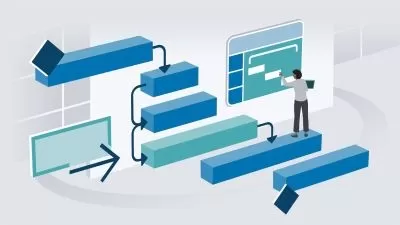
Linkedin Learning


Cindy M Lewis
Microsoft Project in Business Situations: Tips from the Field 52:46
English subtitles
06/27/2023
Subtitle

Linkedin Learning


Cindy M Lewis
Learning Microsoft Project for the Web 2:13:40
English subtitles
04/24/2023
Books
Frequently asked questions about Microsoft Project
Microsoft Project offers an interface for project managers to plan projects and manage work. It allows project managers to assign tasks, allocate resources, and create reports with a full suite of project management workflows, including views (grid, board, timeline), co-authoring for editing and updating task lists, and pre-made reports to track progress. Roadmaps for multiple projects and program tracking are also available. It can even generate timesheets for payroll and invoicing logs. Microsoft Project is integrated with other Microsoft applications, including Office 365, Skype, and Sharepoint, all sharing a similar look and feel to make it more intuitive. People across all businesses and industries use Microsoft Project, including construction managers, startups, and government agencies.
Microsoft Project is not difficult to learn with the right resources. However, it is more involved than simpler programs like Microsoft Word in that it is a relational database, where a single project can potentially log hundreds of tasks and be distributed to different collaborators across single or multiple calendars. For example, a Microsoft Project Gantt chart is a living document, which needs to be continually updated based on task, deadline, and resource alignments. However, an advantage of Microsoft Project is that it can present the most complex of projects in a simple-to-read layout and help you understand how long a project should take, along with all of the dependencies between tasks.
There are many alternatives to Microsoft Project that offer a simple, easy-to-use interface. One popular alternative is Basecamp, which offers a similar interface using Gantt charts to view schedules, recurring tasks, roles, and project owners. It can also run across most platforms, including Mac, Android, Windows, and iPhone. Another commonly used option is Trello, which manages projects using a board and card format and a heavy drag and drop interface, a nice alternative to the more traditional Gantt chart. It can also accommodate third-party apps and plug-ins for more customized coding needs. Trello offers pretty powerful visuals, which some may find easier to read than Microsoft Project's Gantt charts. A third option is Smartsheet, which uses a spreadsheet-like interface and pre-built templates to track roles, assign tasks, and monitor all project activities. It's one of the more popular programs in use, with more than 40,000 businesses around the world using it.
Resource management represents an integral part of project planning, outlining all assets required to complete a task successfully. Assets could include people, equipment, materials, and supplies—all critical components to keep an organization, project, or task running smoothly and adhering to deadlines. In Microsoft Project, users can create resources and specify the daily or weekly available hours for each resource for a project. For example, one employee could be available part-time and another employee available full-time. Microsoft Project helps generate views, reports, and tools needed to assign, manage, and analyze the effectiveness within an organization, providing the freedom to allocate resources to other areas of the business as required.
Microsoft Project is a very effective planning tool for projects utilizing Agile methodology. In addition to allowing users to build plans, assign resources to tasks, and manage processes/workloads, Microsoft Project effectively tracks the shorter development cycles required of Agile projects. To create an agile schedule using Microsoft Project, choose a new task template for a Scrum project. Once selected, add tasks to your backlog and create a board to visualize your project's workflow. They can be easily shifted via drag and drop to reflect the latest progress status. You can apply Agile to existing non-agile projects. All in all, Microsoft Project offers a powerful tool in managing projects using the Agile methodology.
Microsoft Project is a very effective planning tool for projects utilizing the Waterfall methodology. It allows users to create charts popular with the Waterfall methodology, most notably Gantt charts. Gantt charts consist of subtasks and dependencies falling within a phase, each following in sequence like the waves of a waterfall. Unlike the Agile methodology, tasks are more linear. Creating a workflow using the Waterfall methodology in Microsoft Project is easy. A project plan offers the choice of working with a Card Wall or Waterfall format, which mimics a sequential design process that splits into different chronologically ordered phases where one cannot start until the previous phase gets completed. All in all, the Waterfall workflow is one of the more popular workflows used in Microsoft Project.
Portfolio management, also referred to as project portfolio management, centralizes projects of all shapes and sizes into one centralized platform, making them easier to manage. When deciding which projects to take on, organizations analyze the potential returns on a project and obtain buy-in from key stakeholders across an organization. That can take place using project portfolio management software like Microsoft Project. Microsoft Project offers various project portfolio management tools designed to plan, prioritize, and manage projects. Project data is automatically converted into insights using reports and dashboards. Using customized dashboards, users can model different portfolio sciences, weight proposals by the amount of cost and resources, and get buy-in from key stakeholders within an organization.
Project management signifies a method of defining processes and allocating resources to produce one or several deliverables: software programs, building construction, and other activities across countless industries and applications. It combines knowledge, tools, skills, and techniques to meet specific project requirements. According to the PMBOK Guide, a collection of best practices by the Project Management Institute, a leading professional association for project managers, project management consists of five phases: initiation, planning, execution, monitoring, and closure. Initiation refers to defining project goals, while planning describes the scope, sets the budget, and creates roles. Execution depicts the allocation and management of project resources, and process and monitoring/controls refer to tracking costs, progress, and finalizing all deliverables.









